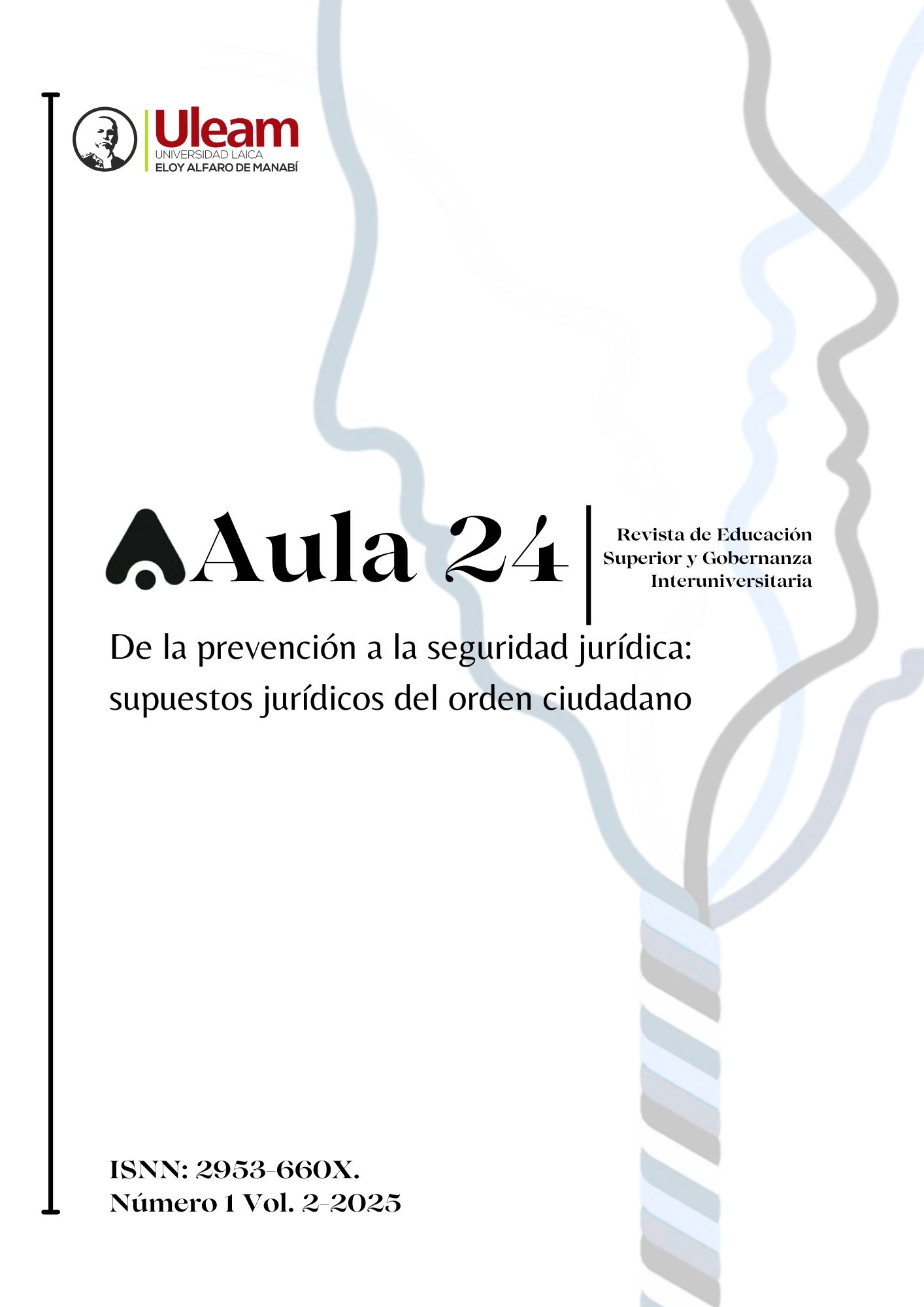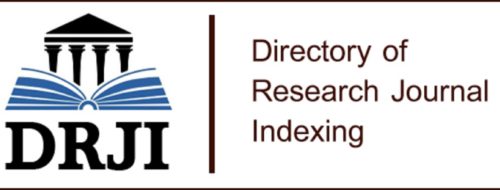Biological Sex as a Political Issue: Analysis of the Health Care Protocol for Intersex Newborns in Ecuador
DOI:
https://doi.org/10.56124/aula24.v1i2-25.004Keywords:
Intersex, biological sex, state power, body regulation, medical protocolsAbstract
This article explores how, from the consolidation of power and the exercise of domination by the State, a truth has been constructed (a relationship of power and knowledge) related to biological sex. This truth has been materialized in a situated manner within the bodies of intersex babies or those defined by medicine as "Disorders of Sexual Development" (DSD). In other words, it pertains to births that differ from the traditional categories of male and female. These bodies exhibit natural variations in biological sex, and are often referred to as "ambiguous sex (DSD)", and are usually subjected to irreversible surgical interventions aimed at "correcting" their variation to the notions of normalcy promoted by the medical-legal system, seeking to have them recognized as persons with social status and rights. The research is qualitative, based on a bibliographical review and specialized literature. Additionally, its analysis focuses on the "Protocol for the Care of People with Sexual Development Disorders," issued by the Ecuadorian Ministry of Public Health in 2017. This protocol presents various aspects, and its study adopts a situated and contextualized methodology, utilizing an intersectional approach and ethnography. The ethnographic work included collaborating with Axel, an intersex activist who participated in the development of the protocol.
Among the main findings, it is noted that, since 1950, medicine and law have articulated and consolidated the idea that certain bodies are "abnormal," which has led to medicalization and intervention in intersex babies. Another relevant finding is that the protocol is currently no longer in force, meaning that the births of intersex babies continue to be subjected to mutilating and irreversible interventions without an updated regulatory framework.
Downloads
References
Butler, Judith. El género en disputa. Barcelona: Paidós, 1990.
Camacho Zambrano, Margarita. Diversidades sexuales y de género. Quito: Universidad Andina Simón Bolívar, 2009.
Cano, Gabriela. “Entendernos”. Debate Feminista, n.° 28 (2003): 343-6. http://www.debatefeminista.cieg.unam.mx/wp-content/uploads/2016/03/articulos/029_04.pdf
Cabral, Mauro. 2003. “Pensar la intersexualidad hoy”. En Sexualidades migrantes: Género y transgénero, editado por Diana Maffía, 117–126. Buenos Aires: Feminaria Editora.
Corte Constitucional del Ecuador, Sentencia No. 133-17-SEP-CC, caso No. 0288-12-EP.
Della Porta, D., & Keating, M. (2013). Epistemology and philosophy of the social sciences: How many approaches in the social sciences? An epistemological introduction. En D. Della Porta & M. Keating (Eds.), Approaches and methodologies in the social sciences (pp. 5-40). Cambridge University Press.
Dreger, Alice Domurat. 1998. “«Ambiguous Sex» – or Ambivalent Medicine? Ethical Issues in the Treatment of Intersexuality”. The Hastings Center Report 28: 24-35, mayo junio. http://www.isna.org/articles/ambivalent_me-dicine
Fausto-Sterling, Anne. 2006. “Duelo a los dualismos”. En Cuerpos Sexuados, 15-46. Barcelona: Melusina.
Foucault M. 1993. “The five sexes: Why male and female are not enough. In The Sciences. http://chnm.gmu.edu/courses/ncc375/5sexes.html Foucault, Michel. 1995. Historia de la sexualidad. Tomo 1. La voluntad de saber. México: Siglo XXI.
______________. 2007. “El sexo verdadero”. En HerculineBarbin. Llamada Alexina B, editado por Antonio Serrano, 11-20. Madrid: Talasa.
______________. 1996. La verdad y las formas jurídicas. http://www.hechohistorico.com.ar/archivos/Foucautl%20 %20La%20verdad%20y%20las%20formas%20jur%C3%ADdicas.pdf.
Goertz, G. (2006). Social science concepts: A user’s guide. Princeton University Press. Capítulo 2 (pp. 27-39).
Jessop, B. (2006). “The State and State-building”. En R.A. Rhodes, S. A. Binder y B. A. Rockman (Edits.), The Oxford Handbook of Political Institutions, Oxford University Press, pp. 191-216
Machado, Paula Sandrine. Intersexualidade e o "Consenso de Chicago": as vicissitudes da nomenclatura e suas implicações regulatórias. Revista Brasileira de Ciências Sociais, vol. 23, núm. 68, octubre de 2008. Disponible en SciELO Brasil.
Maffía, Diana. 2003. Sexualidades Migrantes, Género y Transgénero. Buenos Aires: Feminaria 21.
___________. 2005. “El contrato moral”. En Búsqueda de sentido para una nueva política, editado por Elisa Carrión y Diana Maffía, 57-100. Buenos Aires: Paidos.
___________.2011. “Sexo, género, diversidades y disidencias sexuales” video conferencia. https://www.youtube.com/watch?v=LFiIUr4Nzho.
Ragin, C. C. (2007). El uso de los métodos cualitativos para el estudio de los aspectos comunes. En La construcción de la investigación social (pp. 143-176). Siglo del Hombre Editores; Universidad de los Andes.
Robalino Cáceres, Cristian Vinicio. ¿Es niño, niña...o ninguno de los dos? ¿Quién decide? El ejercicio médico-jurídico en torno a la intersexualidad en Ecuador. Tesis de maestría, FLACSO Ecuador, 2017. Disponible en FLACSO.
Sabsay, L. (2014). “The politics of sexual dissidence: Identity, activism, and representation”, en MacKinnon, A., & Cann, V. (Eds.), Sexual identities and sexuality in social work: Research and reflections from women in the field (pp. 137-148). London: Jessica Kingsley Publishers.
Salazar Benítez, Octavio. Sobre el derecho de los hermafroditas. Universidad de Córdoba, 2016. Disponible en Helvia UCO.
Downloads
Published
Issue
Section
License
Copyright (c) 2025 Revista Científica de Educación Superior y Gobernanza Interuniversitaria Aula 24 - ISSN: 2953-660X

This work is licensed under a Creative Commons Attribution-NonCommercial-ShareAlike 4.0 International License.













